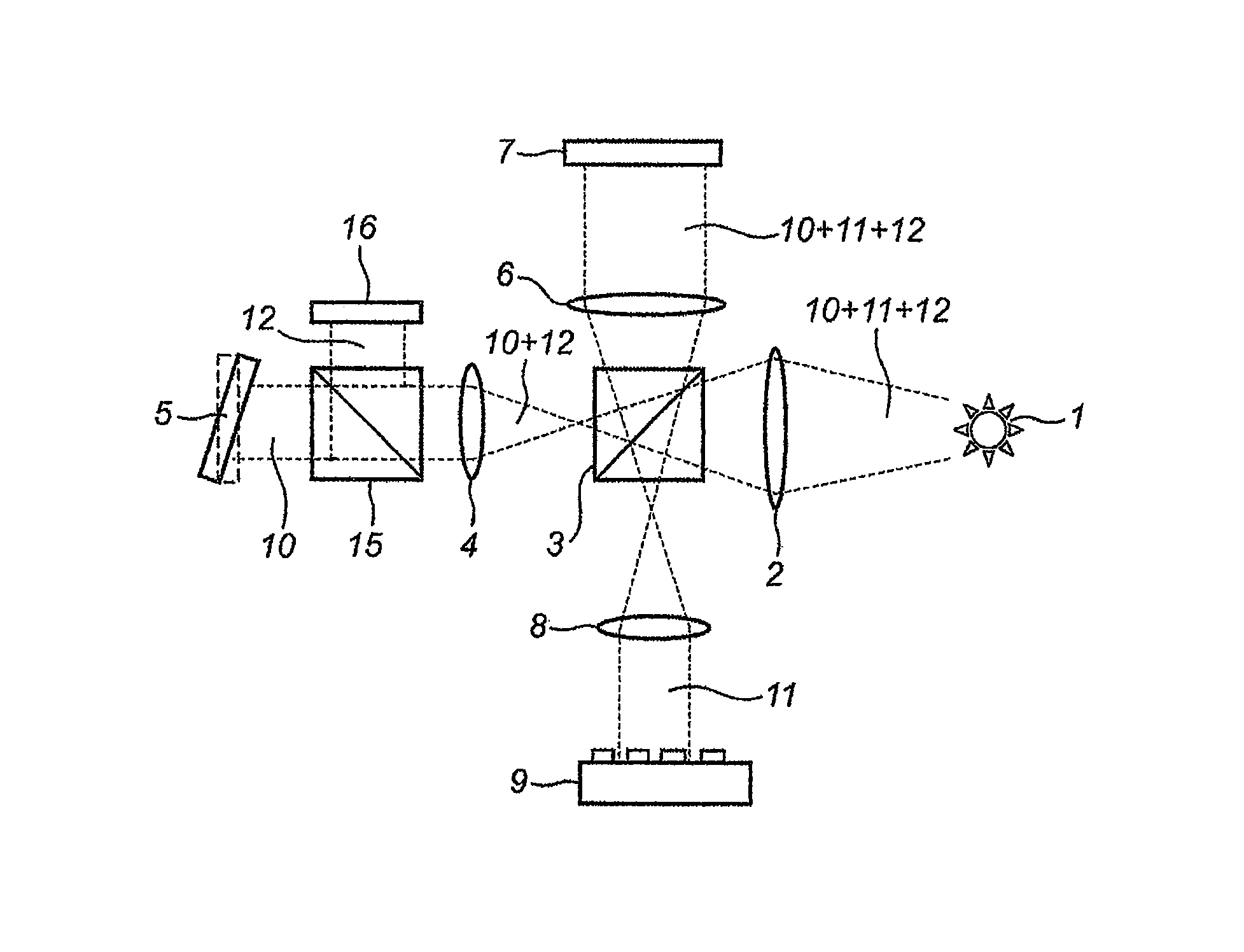Apparatus for the exact reconstruction of the object wave in off-axis digital holography
a technology of object wave and exact reconstruction, applied in the field of amplitude and quantitative phase imaging using digital holography, can solve the problems of insufficient dc terms from the hologram, limited methods, and insufficient in most cases
- Summary
- Abstract
- Description
- Claims
- Application Information
AI Technical Summary
Benefits of technology
Problems solved by technology
Method used
Image
Examples
Embodiment Construction
[0066]FIG. 1 discloses a typical prior art configuration for off-axis digital holography, wherein the hologram is obtained from the interference between a coherent object wave (O) and a coherent reference wave (R). Then, the two-dimensional (2D) intensity distribution (IH) can be expressed as:
IH(x,y)=(R+O)(R*+O*)=|R|2+|O|2+R*O+RO* (1)
wherein R* and O* denote the complex conjugates of the both waves.
[0067]After recording the hologram, the reconstructed wave (ψ) can be obtained by the illumination of the hologram with a reconstruction wave U as follows:
ψ=IH·U=|R|2U+|O|2U+R*OU+RO*U (2)
[0068]The first two terms of Eq. (2) form the zero-order of diffraction, sometimes called a DC term. The third and the fourth terms are produced by the interference terms and they generate two conjugate or twin images of the object. The third term (R*OU) produces a virtual image located at the initial position of the object (object plane) and the fourth term (RO*U) produces a real image located on the o...
PUM
 Login to View More
Login to View More Abstract
Description
Claims
Application Information
 Login to View More
Login to View More - R&D
- Intellectual Property
- Life Sciences
- Materials
- Tech Scout
- Unparalleled Data Quality
- Higher Quality Content
- 60% Fewer Hallucinations
Browse by: Latest US Patents, China's latest patents, Technical Efficacy Thesaurus, Application Domain, Technology Topic, Popular Technical Reports.
© 2025 PatSnap. All rights reserved.Legal|Privacy policy|Modern Slavery Act Transparency Statement|Sitemap|About US| Contact US: help@patsnap.com



